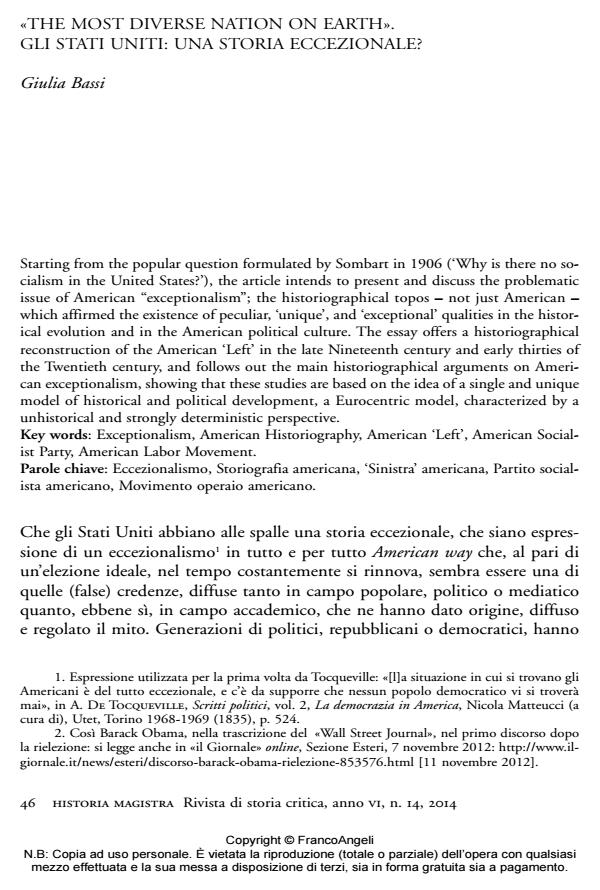"The most diverse nation on earth". Gli stati uniti: una storia eccezionale?
Titolo Rivista HISTORIA MAGISTRA
Autori/Curatori Giulia Bassi
Anno di pubblicazione 2014 Fascicolo 2014/14
Lingua Italiano Numero pagine 19 P. 46-64 Dimensione file 125 KB
DOI 10.3280/HM2014-014007
Il DOI è il codice a barre della proprietà intellettuale: per saperne di più
clicca qui
Qui sotto puoi vedere in anteprima la prima pagina di questo articolo.
Se questo articolo ti interessa, lo puoi acquistare (e scaricare in formato pdf) seguendo le facili indicazioni per acquistare il download credit. Acquista Download Credits per scaricare questo Articolo in formato PDF

FrancoAngeli è membro della Publishers International Linking Association, Inc (PILA)associazione indipendente e non profit per facilitare (attraverso i servizi tecnologici implementati da CrossRef.org) l’accesso degli studiosi ai contenuti digitali nelle pubblicazioni professionali e scientifiche
Starting from the popular question formulated by Sombart in 1906 (‘Why is there no socialismin the United States?’), the article intends to present and discuss the problematicissue of American "exceptionalism"; the historiographical topos - not just American "which affirmed the existence of peculiar, ‘unique’, and ‘exceptional’ qualities in the historicalevolution and in the American political culture. The essay offers a historiographicalreconstruction of the American ‘Left’ in the late Nineteenth century and early thirties ofthe Twentieth century, and follows out the main historiographical arguments on Americanexceptionalism, showing that these studies are based on the idea of a single and uniquemodel of historical and political development, a Eurocentric model, characterized by aunhistorical and strongly deterministic perspective.
Parole chiave:Eccezionalismo, Storiografia americana, ‘Sinistra’ americana, Partito socialistaamericano, Movimento operaio americano.
Giulia Bassi, "The most diverse nation on earth". Gli stati uniti: una storia eccezionale? in "HISTORIA MAGISTRA" 14/2014, pp 46-64, DOI: 10.3280/HM2014-014007